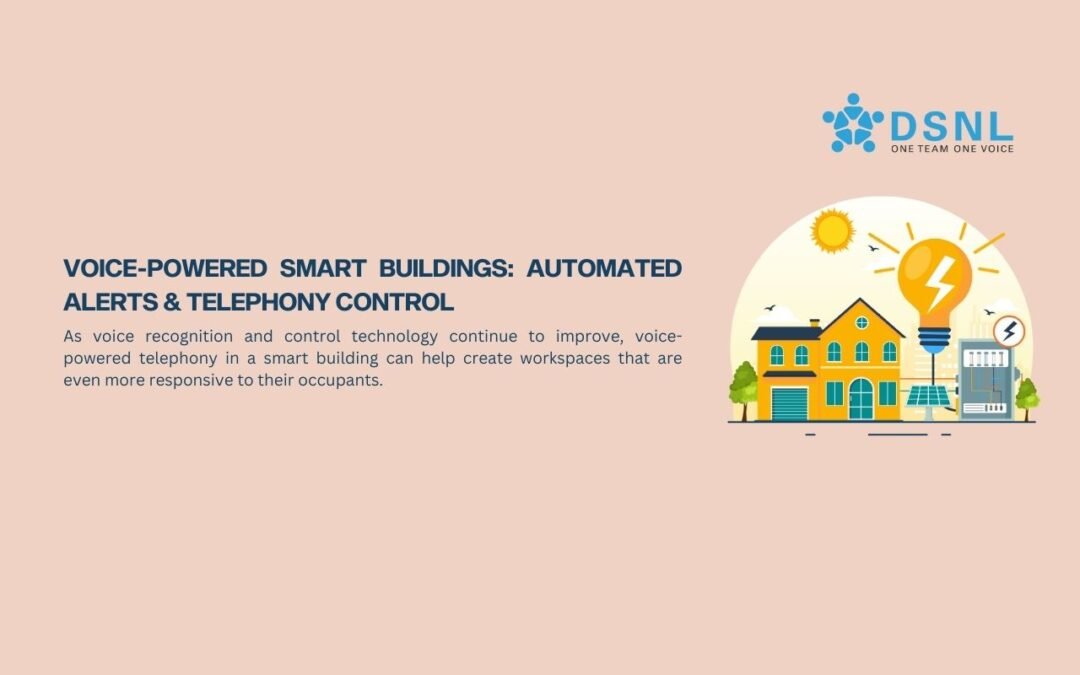As voice recognition and control technology continue to improve, voice-powered telephony in a smart building can help create workspaces that are even more responsive to their occupants.
Telephony systems that leverage IoT platforms, building sensors, and automation protocols can be developed to control building features through simple voice commands.
Smart buildings of the future will also use such systems to automatically generate real-time proactive and automated voice alerts to support occupants and building management in a number of ways to make workspaces safer, more efficient, and more convenient.
In this regard, the future of smart buildings is inevitably linked to the use of telephony in novel ways to create workspaces that are more reactive, personalized, and collaborative.
Voice Interactions with Smart Buildings
Voice control and natural language processing are already becoming an essential element of how people interact with digital technologies. The same can be expected for smart buildings as voice becomes the leading interface between people and the systems and devices of a workspace.
Voice-powered telephony can even help occupants not only issue ad hoc commands (e.g., changing security settings, locking or unlocking doors, or connecting with people) but also trigger building control actions automatically without the need for manual controls or mobile applications.
For instance, through voice-activated telephony, an employee might make a simple spoken command to remotely access a specific restricted area in a building. In this way, it would also be possible to activate specific building security protocols automatically or connect with an appropriate building staff member who could provide immediate assistance.
The frictionless nature of voice interactions based on telephony services means there is less reliance on traditional manual or mobile input devices and programming.
Telephony Control of Smart Building Operations
Beyond voice-triggered alerts, telephony can be integrated with building control systems to provide direct voice control over operations. For instance, a building administrator can choose to turn on or off HVAC, lighting, or access controls within a particular zone in the building using secure voice identification technology and control protocols.
Voice interfaces will likely reduce the need to learn or use complex building control systems or mobile applications to perform simple actions (or make requests) by leveraging telephony services for building communications.
Towards an Autonomous Voice-Driven Building Environment
In the future, one can expect artificial intelligence (AI) to be even more tightly integrated into the use of telephony within smart buildings. AI-enabled telephony services can support more natural language understanding, with advanced algorithms being able to predict user needs and generate automated actions even before commands are given.
Predictive analytics may also allow for proactive voice notifications within smart buildings, such as notifications of an impending equipment failure or dynamic environmental controls based on predictive occupancy changes.
Of course, as smart buildings become more connected with the world around them, it is reasonable to assume that telephony will also become part of an even wider urban building ecosystem in which all connected buildings are both reactive and proactive about safety, sustainability, and productivity through AI-powered automation.
Conclusion: Towards Intelligent and Collaborative Buildings
Voice-powered smart buildings are already redefining the future of how we interact with the infrastructure within workspaces. Automated alerts for safety and security, as well as telephony control to manage operations, will help to create intelligent, autonomous buildings that are more efficient and collaborative.
Voice is already becoming the most natural interface for humans to interact with technology, so it stands to reason that as the IoT ecosystem grows, voice will also become the most natural control channel for managing it all. To know more about such services call us immediately.

